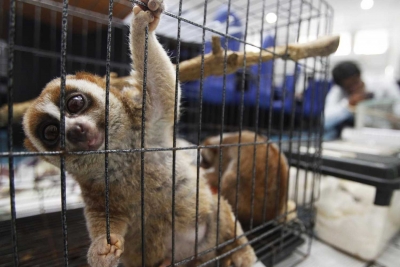
- Wildlife trade is a big business, run by international networks. Animals and birds are trafficked across the globe for meat, skin, bone, fur and other body parts. In addition, many species are sold as pets. Experts at TRAFFIC, the wildlife trade monitoring network, estimate that the illegal wildlife commerce runs into billions of dollars.
- Not all wildlife trade is illegal. The sale or exchange of wild animals and plant resources are done legally for various purposes. Regulated by the United Nations’ Convention on International Trade in Endangered Species of Wild Fauna and Flora (CITES), it is done in a sustainable manner. Wild plants and animals from tens of thousands of species are caught from the wild and then sold legitimately as food, pets, ornamental plants, leather, ornaments and medicine.
- A trade becomes illegal when wildlife listed as protected under domestic or international law is hunted. Fishing and hunting without a licence and capturing wildlife from protected areas and during certain seasons also amount to wildlife crimes.
Did you know?
- Elephants are poached for their tusk, skin and meat. Ivory is used to make billiards balls, piano keys, art objects and jewellery.
- Rhinoceros are killed for their horn, which is predominately used in traditional Chinese medicine.
- While freshwater turtles and pangolins are hunted for their meat, their body parts namely, carapace and scales, respectively, are used in Chinese medicine.
- Tigers and leopards are killed for their skin.
- Snakes, ape and monitor lizards are consumed as meat.
- Song birds, finches, macaws, weavers, cockatoos, geckos, aquarium fish, turtles are captured alive so that they can be kept or sold as exotic pets.
Picture Credit : Google

